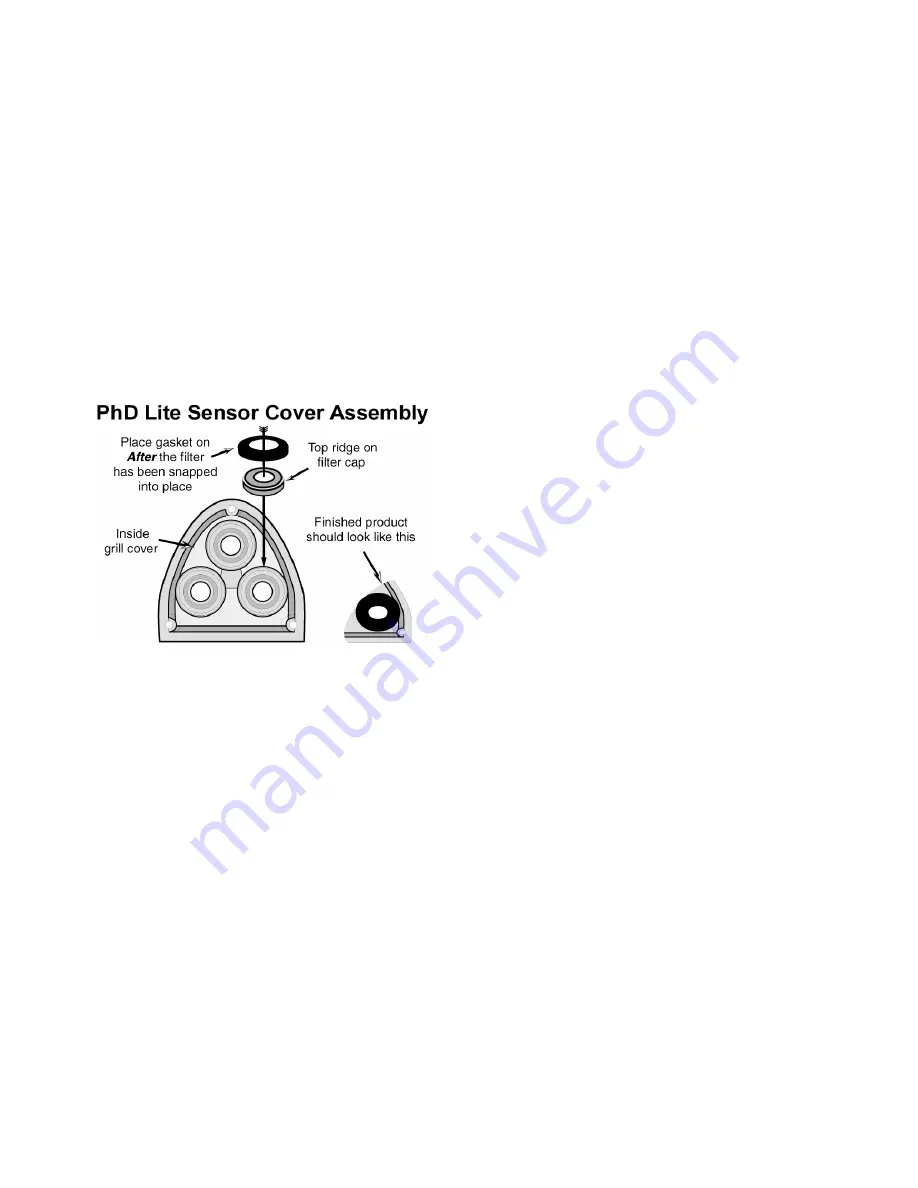
56
appears, contact Biosystems Instrument Service
Dept. for further guidance.
PhD Lite programming includes safeguards to recognize
maladjusted sensors. If the settings on the new sensor
are significantly different from those of the sensor that is
being replaced, a message indicating that the sensor is
reading “Too Low” or “Too High” for Auto-Calibration
may follow the first attempt at one-button calibration.
Note: The first fresh air calibration adjustment after
installation of a new sensor should be done using
the “manual” calibration procedure as discussed in
section 4.5 of this manual
Once the new sensor has been fresh-air calibrated
using the “manual” calibration procedure, subsequent
fresh air and span calibrations can be made by using
the MODE button and One-Button Auto-Calibration
procedures.
6.1.2 New
sensor
releases
Biosystems occasionally releases a new type of toxic
sensor, or makes changes to existing sensors in order
to improve performance. In some cases it may be
necessary to update the PhD Lite’s internal software
before making use of the new sensor. If a sensor that is
incompatible with the current configuration of the
instrument’s internal software is installed, a message
stating that the sensor is “Not Supported” will be
displayed at the time the instrument is turned on.
For instructions on updating the internal instrument
software in your PhD Lite, see section 6.4 below.
6.1.3 Troubleshooting
sensor
problems
Many difficulties with sensors can be resolved easily.
Below are a few of the most common sensor-related
problems.
6.1.3.1 Can’t make automatic fresh air/zero
calibration adjustment
Possible causes and solutions
1. The atmosphere in which the instrument is located
is contaminated (or was contaminated at the time
the instrument was last fresh air calibrated.
2. A new sensor has just been installed.
3. Instrument has been dropped or banged since last
turned on.
4. There has been a significant change in temperature
or humidity since the instrument was last used.
Solution:
Take the instrument to fresh air and allow readings to
stabilize. Perform a manual fresh air/zero adjustment
as discussed in section 4.5.1. If the manual fresh
air/zero procedure fails to correct the problem, call
Biosystems Instrument Service Department at (860)
344-1079 or (800) 711-6776.
6.1.3.2 Can’t make span calibration adjustment.
Causes:
1. Instrument failed the last fresh air / zero calibration.
2. Empty calibration gas cylinder.
3. Expired calibration gas cylinder.
4. Calibration gas setting does not correspond to
calibration gas.
5. Sensor has drifted outside of the range for
automatic calibration.
6. LEL only: Type of calibration gas (standard) has
changed significantly.
7. Dead
sensor.
8. Instrument
problem.
Solutions:
1. Verify that the instrument can be fresh air / zero
calibrated by performing the procedure discussed
above in section 6.1.3.1.
2. Verify that the calibration gas is not empty.
3. Verify that the calibration gas is not expired.
4. Verify that the calibration gas is the correct type for
the sensor and that the calibration gas settings are
identical to those given on the cylinders. See
section 4.7.2. for instructions related to calibration
gas settings.
5. Span calibrate the instrument manually by following
the instructions given in section 4.5.2.
6. If the calibration gas standard has changed
significantly, span calibrate the instrument manually
be following the instructions given in section 4.5.2.
7. Replace
sensor.
8. Send instrument back to Biosystems.
6.2 Motorized
pump
A motorized sample pump is available for the PhD Lite
for remote sampling. The motorized pump is powered
by the PhD Lite battery. When the pump is attached
Summary of Contents for PhD Lite
Page 2: ...1...

























